Extension Of The I With Rad Drew – A Photographer With A Highly Creative Fine Art Twist
Welcome to another new series of interviews and insights that we are running on theappwhisperer.com. This new section, entitled, Extension Of The I, goes deeper into the photographic aspects of mobile photography. It delves into the lives and thoughts and influences that our artists experience from their photography. No other mobile photography website reaches the depths and emotions of the mobile photographers as we do in this new series of interviews.
We think you’re going to enjoy this, a lot. Today, we are featuring Rad Drew, we previously interviewed Rad in our A Day In The Life of Series, if you missed that you can read it here. For most of his life, Rad has had a camera close by. His love of photography took him to Indiana University where he studied fine art and earned a degree in Journalism, with an emphasis in photography. During his years at IU, Rad studied with acclaimed and distinguished photojournalists, John Ahlhouser and the late Will Counts.
Rad enjoys sharing his knowledge of the iPhone and available applications with other photographers through presentations and workshops. His iPhone images have been chosen and exhibited in juried shows in locations across the country, and he is a regular contributor to the juried site, Pixels at an Exhibition.
Each image is titled with the apps used to create it in sequential order. You can find all the links the the apps mentioned at the end of this article.
(If you would like to be interviewed for our new ‘Extension Of The I’ section, just send an email to [email protected], and we’ll get it set up).
First Things First…
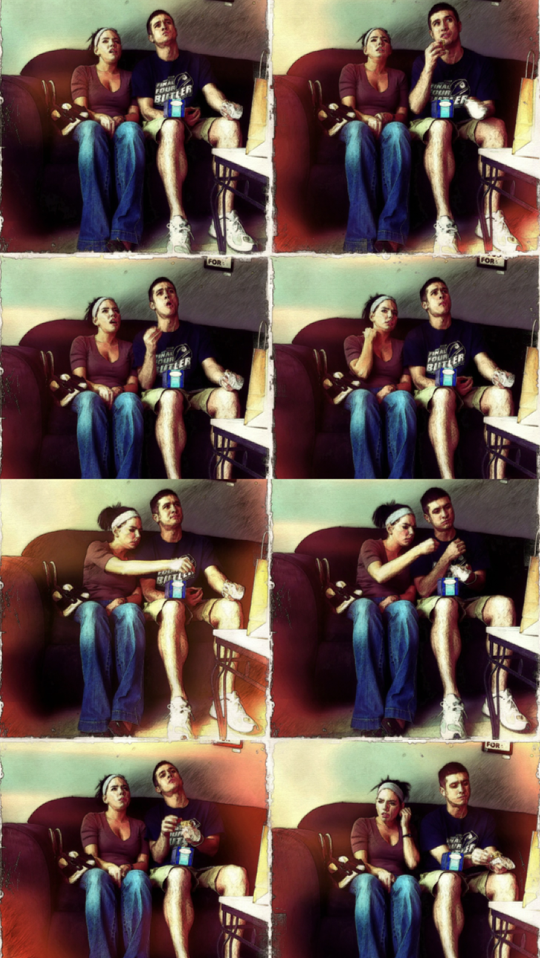
Copyright Image – Rad Drew – ‘Art Critics’ – Apps used – Hipstamatic, Chunky Kodot xGrizzled, Photoforge to sharpen, ArtistaSketch, Iris to blend, Diptic
JC – How did you get started in photography?
RD – A Brownie box camera when I was 10 pretty much synched the deal. I was totally fascinated with the idea that I could push a button on a black box about 12 times and then take a little spool to the drugstore and wait about a week and I’d have PICTURES! I was enamored with the idea that I could manipulate light in ways that would affect and yield different results. That fascination remains today, even though the processes and technology has changed considerably.
Influences…
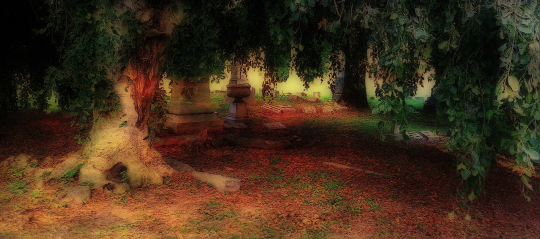
Copyright Image – Rad Drew – ‘Weeping Beech Graves’ – Apps Used – Classic Pan, Photoforge Unsharpen Mask, Autopainter Benson, DyLight Relief, DyLight Orton, Iris, FS curves
JC – Who and what are your influences?
RD – The photography I’m doing today is influenced or informed a lot by the incredible work of others who I see using the iPhone to create mind-blowing images! But the influence to even consider photography as a mode of expression started years ago. When I was a freshman in high school, long before I knew any photographers, I was influenced by my journalism and English teachers who both encouraged me to create images and to write. Later, when in college, I had the opportunity to study with acclaimed and distinguished photojournalists, John Ahlhouser and the late Will Counts. Both were involved in photographing during the civil rights era and were present at the 1968 Democratic Convention. I was in awe of the power of the images they took then and how those images were used to tell a story and inform a generation.
As I began to study and learn more about fine art in college, I was attracted to the work of Imogene Cunningham, Minor White, Dorothea Lange, Walker Evans, and Edward Weston, among others. And I loved the odd and playful images produced by Philippe Halsman! I think today, people use the internet they way we used books in the old days. When I wanted to see what was being or had been done in photography, I picked up books of these artists’ work. I couldn’t afford to buy them, so I sat in books stores or libraries looking at things.
Sometime in the 70’s I discovered the work of Duane Michals and was totally captivated by his multiple exposure images, sequences, and his series of images in which each shot was taken from an opposing perspective. For example, in one series, he photographed a record album from the perspective of the person placing the record on the turn-table and then from the perspective of the spindle on the turn-table about to receive the record! I thought this was pure genius and I spent many hours trying to replicate this technique! Inspired by his fantastic double exposures, I used my father’s old Argus C3, and created countless in-camera double exposures … things like my friend and willing model arm wrestling with himself at the kitchen table, or self-portraits of me meeting myself on a staircase… one “me” going up and the other going down! All that was a long time ago, but those experiences remain pretty figural for me and are still part of what motivates me to shoot today.
Subjects…
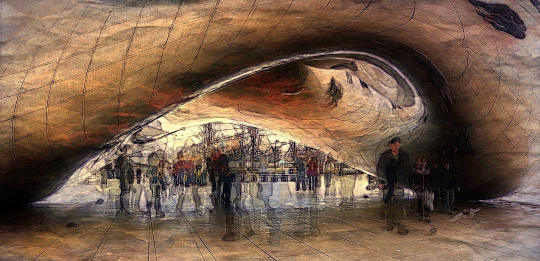
Copyright Image – Rad Drew – ‘Bean 2’ – Apps Used – Slow Shutter, Photoforge, Filterstorm
JC – What draws you to the subjects you seek?
RD – Images exist everywhere. I have a friend who is fond of quoting Minor White: “Not what will I take today. But what will I be given today” . I try to remember this thought and approach every day with the knowledge that if I remain open and present to what is all around, I will be given images that speak to me. Light is everywhere and its falling on objects is all it takes to create images that are beautiful, shocking, moving, etc. Although it’s fun, one doesn’t need to travel to the four corners for photographs.
Communication…
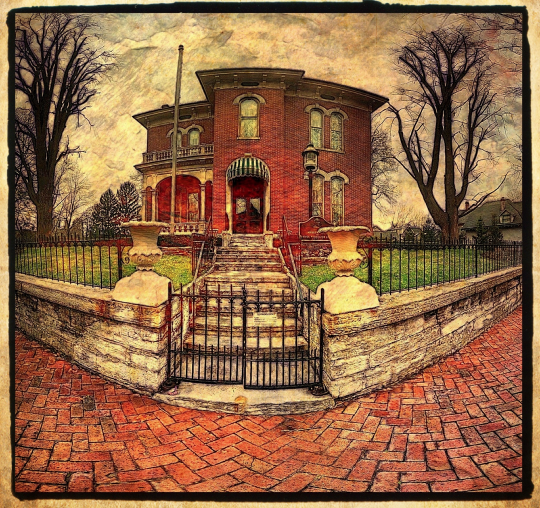
Copyright Image – Rad Drew – ‘Riley Home’ – Apps Used – Bracketmode, Autostitch, Pro HDR, Photoforge, PS Express, Pic Grunger
JC – What is it about these subjects that you want to capture/communicate and ultimately convey in your images?
RD – It really depends on the image. Sometimes, I just want to preserve for myself or convey to others the beauty of a landscape or a flower or a face. Sometimes it’s more. I recently visited Eastern State Penitentiary and photographed the cells and the hallways of this prison. When processing a photograph of a long hallway, I tried to imagine what would be going through my mind if I were imprisoned here and forced to walk the corridor. I tried to apply effects that would capture what I imagined was the horrible reality of being there and also what I imagined must be the surreal feeling of such a place. Whether I succeed in achieving that feeling and mood is for others to decide, but for me, the act of exploring my imagination in this way is a type of success in and of itself. It’s in this way that photography expands my environment, my mind, my sphere of consciousness. That photographs and processing them stimulates my imagination in this way is what I love about photography!
Decisions…
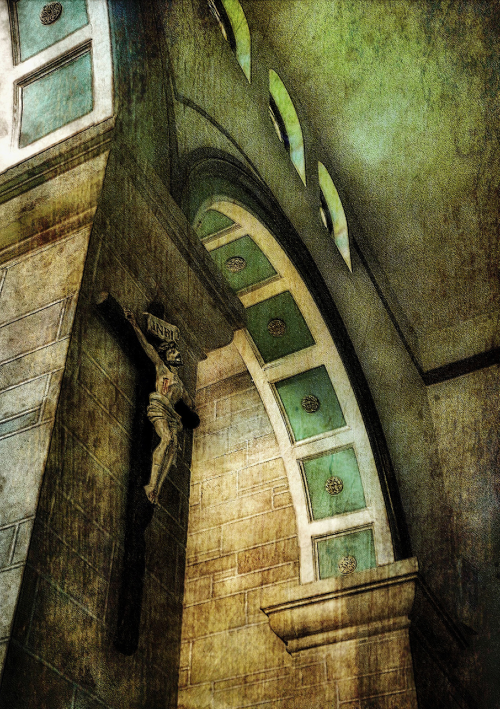
Copyright Image – Rad Drew – ‘Crucifix’ – Apps Used – ClearCam, Camera+, Photoforge, VintageScene, Filterstorm
JC – How did you ‘settle’ on this subject?
RD – I don’t know that I’ve settled on any particular subject since I like to shoot lots of different things, although abandoned structures that still hold some sense of the past are intriguing to me. Finding images among building ruins or memorabilia left behind is a lot of fun for me.
Exploration…

Copyright Image – Rad Drew – ‘Farmfields’ – Apps Used – Bracketmode, Autostitch, Camera+, Photoforge, Dynamic Light, Blender
JC – Is there another are/subject that you would like to explore, if so, what and why?
RD – I have limited experience photographing people. I did this for a few years as a photojournalist and then got away from it. Today, I rarely photograph people, even though I find people to be probably the most fascinating subjects to shoot. Today, I’m working more on approaching people in public places and asking them if I can photograph them. This is extremely hard for me. It’s also difficult for me to move quickly. When I shoot inanimate objects, I’m very deliberate and methodical. Few people, I fear, have patience for this and so, I’m learning to move more confidently and quickly. I want to do more in the street with natural light and real surroundings.
Influences…
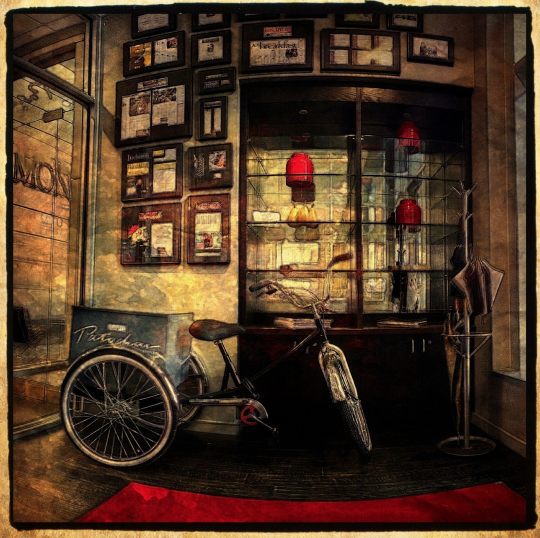
Copyright Image – Rad Drew – ‘Patachou’ – Apps used – Bracketmode, True HDR, Autostitch, Photoforge, FIlterstorm, PS Express, Pic Grunger
JC – Which photographers (not necessarily mobile photographers) do you most admire and why?
RD – I have a short list of contemporary photographers who have been tremendously generous in sharing with me (and many others) the things they know from their years as photographers. The short list includes Dan Sniffin, John Barclay, Tony Sweet, Harry Sandler, Dewitt Jones, Karen Messick, and Dan Burkholder. Each is a marvelous photographer in his/her own right, each possesses incredible knowledge and skill, and each has embraced iPhone technology, always looking for ways to use it to create fantastic images. I admire these photographers as much for their skill with a camera as I do for their generosity and willingness to teach and share. They are great photographers and even greater people, and I enjoy each and every exchange I’m privileged to have with them.
I also admire a host of contemporary photographers whose work I see frequently in groups on line and in collections at iPhoneArt.com and Pixels at an Exhibition. Some of the work being created is utterly breath-taking and awe-inspiring, and its artistic quality is rapidly evolving. These creative photographers, many who have been interviewed here, are fueling each other’s creativity and serving as inspiration for each other and it’s evident in the work being done today.
From an historical perspective, I admire those photographers and other artists who were pioneers and instrumental in getting photography accepted as a legitimate, accepted art form, including Ansel Adams, Edward Weston, Georgia O’Keefe, Imogene Cunningham, and of course, Alfred Stieglitz. There were others, of course, but these are the ones whose work I am most familiar with and which has inspired me.
Street Photography…
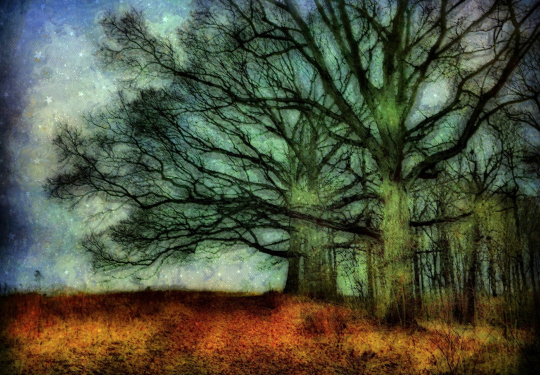
Copyright Image – Rad Drew – ‘Oaks Stars’ – Apps Used – BracketMode, Autostitch, Photoforge, Artistasketch, Percolator, Starry Texture, Iris
JC – Henri Cartier-Bresson is in many ways, the Godfather of street photography, even in the 1930’s he enjoyed using a small camera for discretion in order to capture people and tell a story – do you feel this way regarding mobile photography?
RD – As a photojournalist I was always taught to strive for objectivity, that is to say, capture what is there without in anyway influencing it. I think for a photojournalist, this kind of objectivity is a worthy goal but not something that can ever be achieved. No matter how little one thinks he’s influencing or contributing to an image, just by having a point of view (which is required to take a photograph) objectivity is lost. It just can’t be helped. The alternative is to be in the image in the sense that you let your subjects be aware, to see that you are photographing them, and in that way insert yourself into the scene. When you do this, you create a different kind of image, one that emphasizes the relationship between the photographer, the subject and the environment. I think both results can be valid!
Holding a big camera in front of your face while shooting another person definitely influences the photo! People react in many different ways when they know they’re being photographed. I do like the way I can be more inconspicuous with the iPhone. Like a lot of people, I recently discovered the work of street photographer, Vivian Maier, and saw her work exhibited in Chicago. It’s a truly remarkable body of work and as I looked at her images, I was aware of the angle of her shots. Because she used a Rolleiflex, she was always shooting from the belt. If people realized she was photographing them, they often looked at her. Many of her shots have people looking directly at her… not at the camera but at her. Some people were indifferent, some were pleading, some were angry, but those emotions seemed to be very personal; she captured what was in that moment an interaction, a relationship, between herself and the subject. It makes her work very intimate and emotionally powerful. Looking at her images, it struck me just how much our camera can influence the outcome of a photograph, especially when photographing people.
I sometimes shoot people without them being aware at all (is that wrong?!). Here’s a series I shot at the local coffee shop. Art Critics is a sequence of shots of a young couple who were critiquing a work of art hanging on the opposite wall while drinking coffee and sharing a cookie. I took this series and they were completely unaware of my presence. I love their changing gestures and expressions, something I couldn’t have captured had they known what I was doing.
Technique…
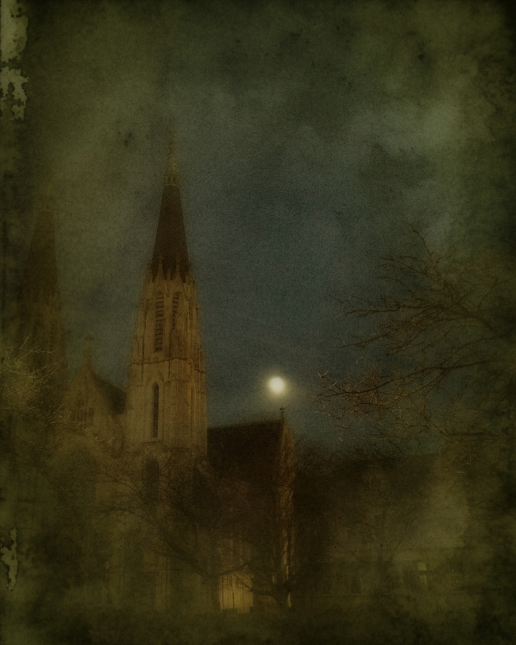
Copyright Image – Rad Drew – ‘St Marys’ – Apps Used – ClearCam, Camera, Photoforge, Vintage Scene
JC – Tell us about your photographic technique – do you rely on intuition or do you believe in a more formal/trained approach?
RD – I’ve had some photojournalism training, but I’m not a “trained” photographer, especially when it comes to producing artistic images that aren’t photojournalistic. Though intuition’s an important part of any photograph, so’s the ability to make the image taking advantage and consideration of the light, subject, composition, and so on. For me there’s a balance that works best… follow your intuition, but apply your skills and knowledge of light and composition to create the image. For me there’s plenty to learn in both arenas. On one hand, I’m trying to learn to listen to my intuition and to be present for whatever is there for me to see. On the other hand, I want to have the skill when the moment arrives, to be able to take the photo in a way that will realize my vision; that takes training and technique and most of all, practice! There is always something to be learned about how to frame an image or how to treat the available light or how to compose the image.
All For One…
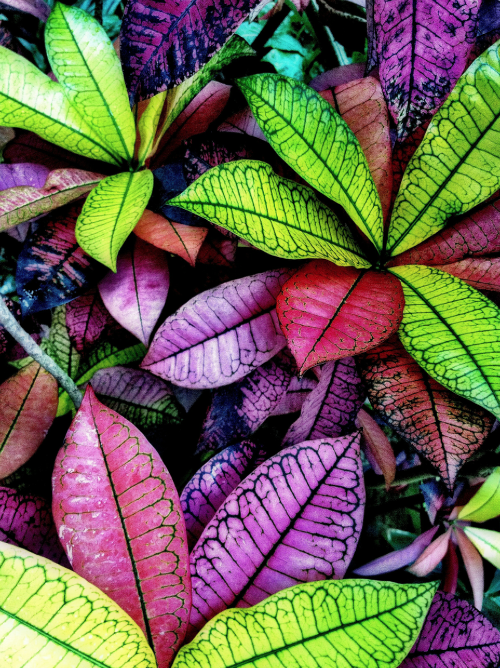
Copyright Image – Rad Drew – ‘Croton’ – Apps Used – Pro Camera, Camera+, Photoforge, Filterstorm, Dynamic Light, Blender
JC – Many of the great photographers, Jacques Henri Lartigue, Robert Frank, Henri Cartier Bresson described only shooting images for “themselves”do you see this attitude with mobile photographers?
RD – Most of the mobile photographers I know do their “own thing,” and thrive on feedback from, and sharing with, others. They seem to want to put their work (and themselves) out there for people to react to, in part so they can continue to evolve as artists. Social media has made that sort of sharing and communicating more effective, immediate and ubiquitous than at any time in history! I think it’s great that people are exploring new frontiers and sharing those through sites like Pixels at an Exhibition and iPhoneArt. It’s also great to see so many on-line communities springing up where groups are focusing on things like abstracts, conceptual, contemporary, representational, etc., in order to explore and hone their skills in a particular type of photography.
Evolution…
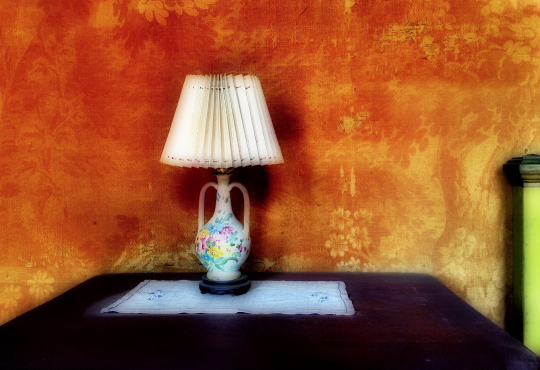
Copyright Image – Rad Drew – ‘Lamp’ – Apps Used – ClearCam, Camera+, Photoforge, Filterstorm, Dynamic Light, Blender
JC – How has your photography evolved?
RD – As a photojournalist, manipulating an image is entirely taboo. It isn’t done. I learned photography from this viewpoint and for years I didn’t do anything to my images, outside of a minimal amount of dodging and burning. Today, I’ve moved to the opposite end of the spectrum! As Knox Bronson, curator of the wonderful site, Pixels at an Exhibition, says, “Aim well, shoot fast, and app that bitch until it sings!” The majority of my iPhone work is manipulated to a high degree. Whether that’s “evolution” or not, I won’t speculate, but it sure is different. And fun! I think what has evolved is my sense of composition. I have always carefully composed in the camera — a necessity for a photojournalist — but I think I’m getting to a point where I see compositions more spontaneously without having to really think about it as much.
Risks…
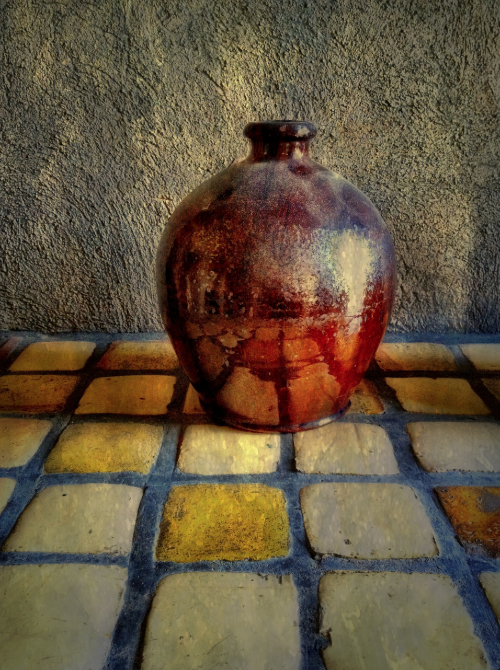
Copyright Image – Rad Drew – ‘Jug AW’ – Apps Used – ClearCam, Camera+, Photoforge, Filterstorm
JC – Do you take risks with photographs, push boundaries? If yes, please give examples, if no, why not, would you like to?
RD – I love trying new process techniques, combining different app results, etc., to see if I can achieve an effect that has merit. I fail more than I succeed, I’m sure, but there’s success in the experimentation. Right now, the boundary I’m up against is my resistance to approaching and photographing people on the street, which I’ve challenged myself to work on this year.
In the past year I did create two images that I think were somewhat risky in a more social way. One was an image of a homeless vet’s “nest” under a bridge, and the other was my ex-wife’s radiation mask used for her throat cancer treatments. Both communicated a powerful sentiment whether sad, moving, or controversial; each makes a statement about significant political or emotional issues of our times. These two images have received by far more comments and emotional reaction than any other work I’ve produced using the iPhone.
Favorite Image…
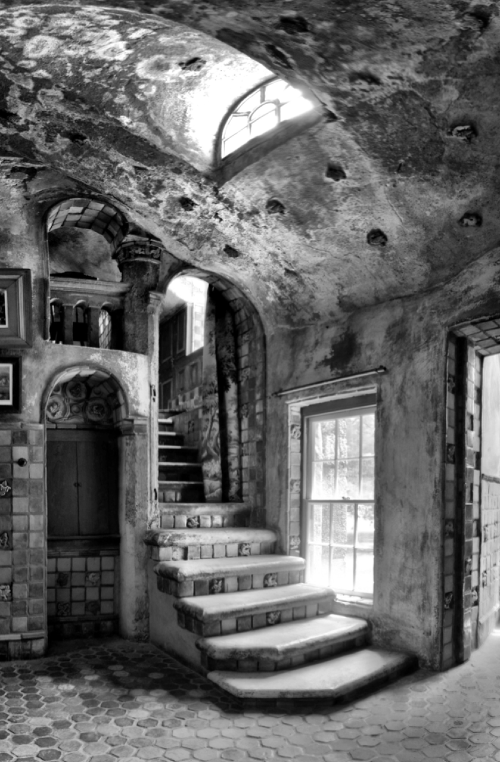
Copyright Image – Rad Drew – ‘FontHill’ – Apps Used – BracketMode, AutoStitch, Camera+, Photoforge, Simply B&W, Snapseed
JC – What is your favorite picture, of your own and why?
RD – This is like asking a parent, “Which is your favorite child?” How can I answer that?! I’m going to select from my iPhone work from the last two years. I mentioned that I love to shoot abandoned sites that hold a sense of history. The Indiana country side near the city where I live is dotted with beautiful farms and homesteads, many of which have been hard hit by the current recession. There are a lot of abandoned farms. I came across a farm house in the country that looked like it hadn’t been abandoned all that long. Making this photograph and processing it was a very emotional experience for me. I found myself wondering about the family that lived there, imagining kids running around on a summer evening catching lightening bugs and cattle lowing in the nearby pasture. To me this image, Homestead, is symbolic of so much of what I love about Indiana, and a sad testament to the effect the recession is having on rural life and culture.
Emotional Involvement…
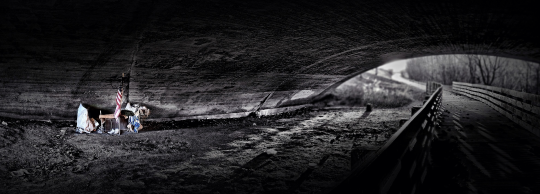
Copyright Image – Rad Drew – ‘Homeless Vet’ – Apps Used – Bracketmode, Autostitch, Camera+, Photoforge, Filterstorm, Snapseed
JC – Do you get emotionally involved with your photography?
RD – My photography is a source of joy in my life, so yes! I do get emotionally involved! I can get as emotionally involved with the resulting image as with the process of creating it. Photography for me, especially the shooting, is a meditative experience. I get in a zone. In Montessori lingo I think they call it “flow.” When I have my tripod up and I’m looking through my camera, I’m totally in that world and very little else matters in that moment. I think getting to this space, however we do it, is a really important and necessary rejuvenate practice. I like to get to the place where creativity seems spontaneous and seamless, whether shooting or processing. When all this comes together, hopefully, I’m able to create something that will inspire an emotional response for others too.
Entwined…
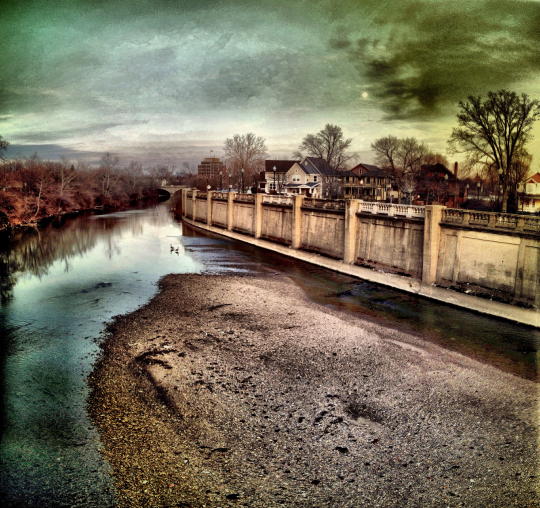
Copyright Image – Rad Drew – ‘Fall Creek Geese Moon’ – Apps Used – Bracketmode, Autostitch, Camera+, Photoforge, Dynamic Light, Snapseed
JC – Does your life become entwined with your subjects?
RD – Well, sometimes. (I was already pretty entwined with my ex-wife before I photographed her radiology mask!) More than my subjects (I don’t shoot many people), I get “entwined” with other photographers. Since getting involved with the iPhone and processing on the iPhone and iPad, I’ve met people from all over the world, many of whom I’ve managed to meet in person. From the classes I’ve attended and the ones I’ve taught, I’ve formed many relationships with people who I see and shoot with regularly. I recently traveled to Philadelphia to meet up and shoot with a half dozen friends who all met on the internet and I’ll be traveling to Cuba in January with another group of friends. The combination of passion for photography and the ease of communication afforded by social media make this a great time to be a photographer!
Workflow…
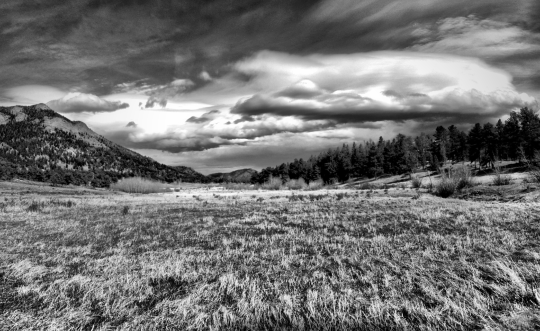
Copyright Image – Rad Drew – ‘Beaver Meadow’ – Apps Used – Bracketmode, Autostitch, Simply B&W, Photoforge, Filterstorm, Dynamic Light, Blender
JC – Do you have a digital workflow system to sort your images, if so what is it?
RD – Managing my images is one of the least favorite parts of doing this work for me! I’ve yet to develop a system that I like and that makes it easy for me to quickly locate what I need. I like the concept of the “cloud,” but until resolution issues are resolved with that method, I’m avoiding using those tools.
Post-Production (Processing)…
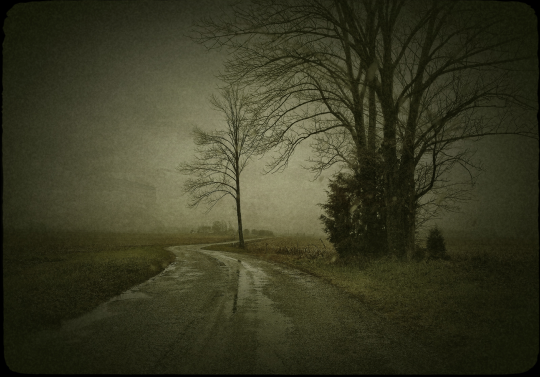
Copyright Image – Rad Drew – ‘Road Ever On and On’ – Apps Used – ClearCam, Photoforge, Vintage Scene, Filterstorm
JC – Do you have a special processing style?
RD – If I do, I’m not really aware of it. I have others tell me that I’ve developed a recognizable style, but it doesn’t feel that way to me. Each image feels new and with all the post-processing possibilities of the iPhone I don’t always know where I’m headed. I usually do start with some sort of HDR processed image and build from that and I do have some go-to apps, but I try not to get into a routine too much.
Tips For Processing…
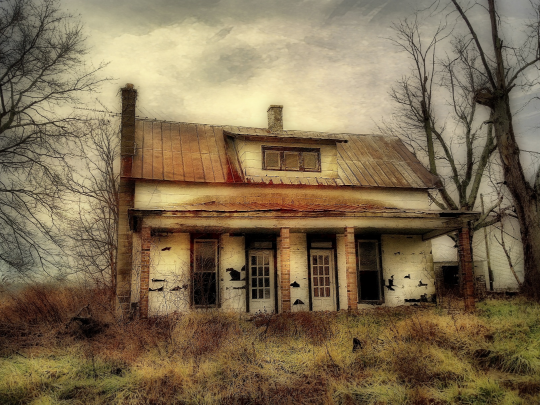
Copyright Image – Rad Drew – ‘Homestead’ – Apps Used – Bracketmode, Autostitch, Camera+, Photoforge, Filterstorm, Dynamic Light, Blender
JC – Do you have any tips for processing?
RD –
. Have fun!
. Ask “What if?” a lot. Don’t be afraid to stick the chocolate in the peanut butter!
. Learn various sharpening techniques and learn how these can be applied to improve your images.
. Be willing to process an image in multiple ways using multiple apps. Serendipity can sometimes lead you to see things that you might not otherwise consider.
Development…
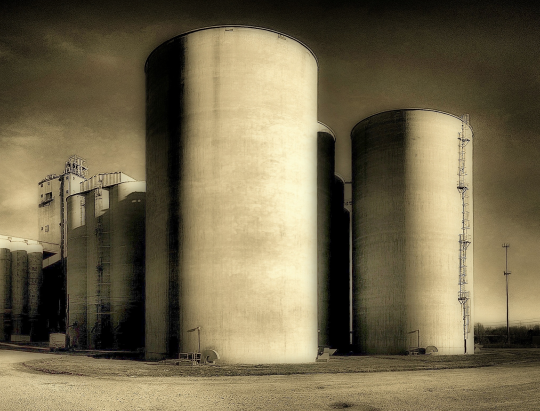
Copyright Image – Rad Drew – ‘Midwestern Monolith’ – Apps Used – Bracketmode, Autostitch, Camera+, Photoforge, Filterstorm, Dynamic Light, Blender
JC – How do you think photography has changed over the years?
RD – The latest revolution has made professional processing tools easy to use. By making these powerful processing tools accessible, we’ve watched an explosion in expression and creativity unlike anything I’ve ever seen before. It’s an exciting time to be involved in photography and I think it’s only going to get better with new and unimaginable advances in the technology.
35 mm Film Days…
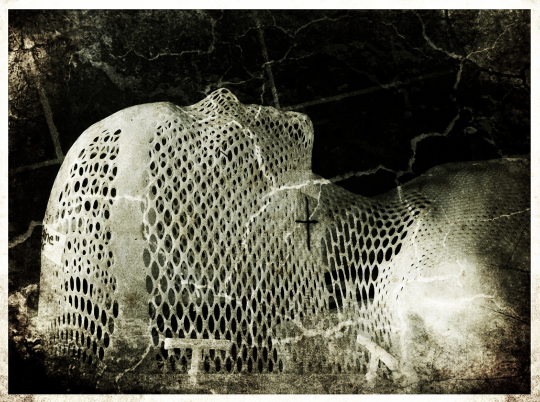
Copyright Image – Rad Drew – ‘Mask’- Apps Used – ClearCam, Camera+, Photoforge, VintageScene, FilterStorm, PhotoStudio, Dynamic Light, Blender
JC – As a mobile photographer you’re at the cutting edge of technology, do you ever hanker for the 35mm film days?
RD – Nearly everyone I know who has ever worked in a dark room, developed their own film and processed their own photographs, can wax nostalgic about the sensory experience: the smell of the chemicals, the feel of the steel spool as you thread your film, working under safelights and especially, the magic of watching an image slowly appear in a tray. These are things that many of today’s photographers can only imagine. But, as much as I love the romance of the darkroom, I’m excited to be living in the digital age. I like the immediacy of knowing that I got the shot rather than waiting hours or days for film to be developed and images created. That said, some looks can ONLY be created in the old-fashioned way and I’m tremendously grateful for those who keep these practices alive.
Links To All Apps Used In This Article
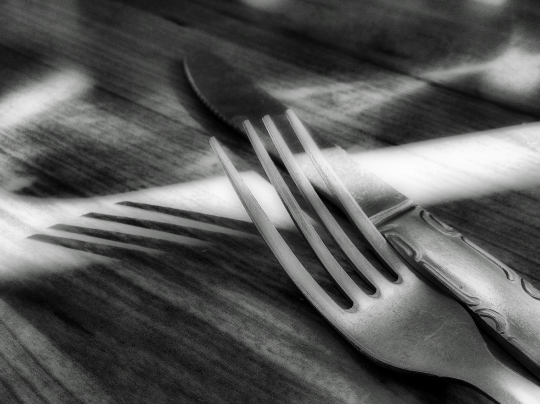
Copyright Image – Rad Drew – ‘Shadow Play’ – Apps Used – Simply B&W, Camera+, Photoforge, Dynamic Light, Blender
Autopainter
Autostitch
Bracketmode
Camera+
ClearCam
Dynamic Light
Filterstorm
Image Blender
Photoforge
Photostudio
PicGrunger
PS Express
Simply B&W
Slow Shutter
True HDR
Vintage Scene
5 Comments
tanci
Bravo for a fantastic interview with an amazing & talented iphoneographer!!!!
Irene Oleksiuk
Rad, what a great interview! You really told the reader (me) so much about yourself and how you think when photographing
Andrew Proudlove
Brilliant interview Rad, loved reading it
Gerry Coe
That was a great interview, Rad a lot of what you said echos how I feel about my work and how I approach people. Although I have been a Portrait photographer most of my working life I do not really like photographing people in the street without asking first. I feel it can be an invasion of privacy. G
Pingback: